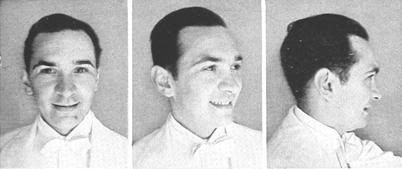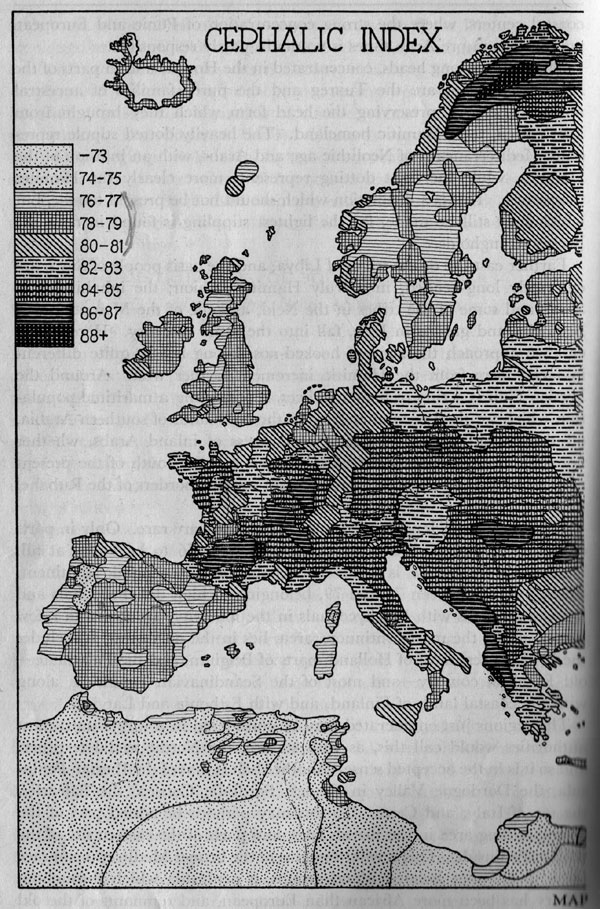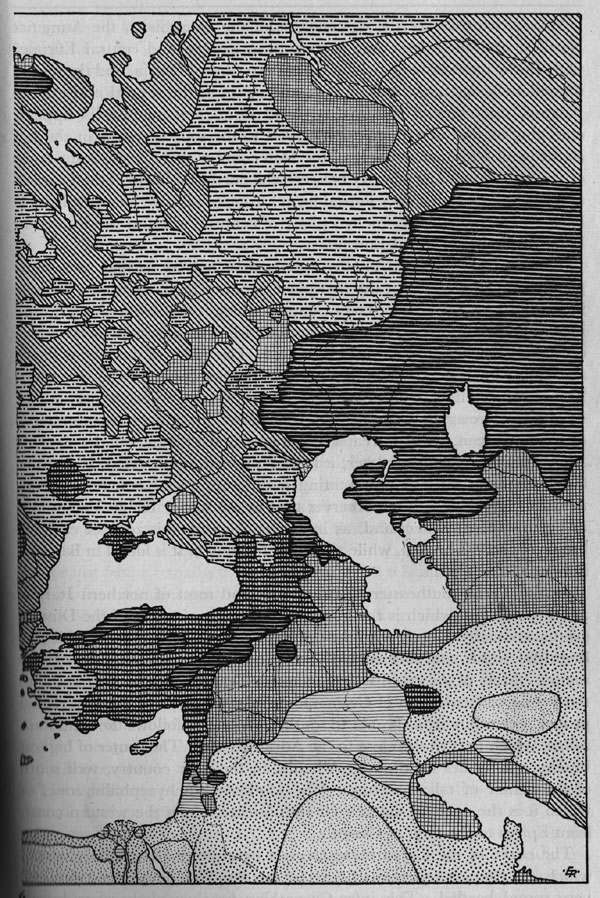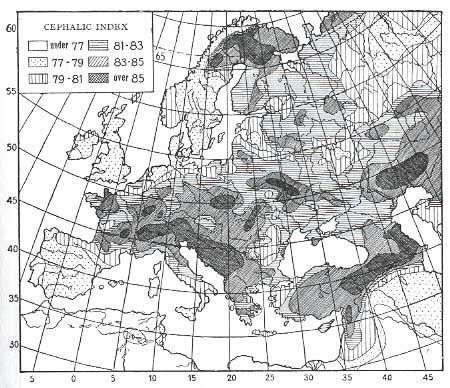Homem da Galiza
Mulher espanhola
3. Dark, dolicopcephalic, short race, called Ibero-Insular, because it is chiefly found in the Iberian peninsula and the islands of the western Mediterranean. It is found, however somewhat softened, in France ( Angoumois, Limousin, and the Perigord) and in Italy (to the south of Rome-Asoli line). Principal characters: very short stature (im 61 to 62 on the average), very elongated head (cephalic index averaging 73 to 76 on the living subject), black, often curled, hair, very dark eyes, tawny skin, straight or turned up nose, ect. It forms, partly, the "Mediterranean race" of Sergi, or Homo meridionalis of certain authors(Ripley, Lapouge). Figures 99 and 100 represent traits of this race, but modified by intermixtures.
4.Dark,very brachycephalic, short race, named the Western or Cevenole race, because in of the localisation of its most chartcteristic type in the extreme west of Europe,in Cevennes, on the central table-land of France, and also in the western Alps. But is met with, a little modified,in Britanny(with exception of Morbiihan)in, Poitou, Quercy, the middle valley of the Po, in Umbria, in part of Tuscany, in Transylvania, and probably the middle of Hungary. Blended with other races, its found again in a number of points in Europe, from the basin of the middle Loire to that of the Dneiper, passing through Piedmont, central and Eastern Switzerland, Carinthia, Moravia, Galicia, and Podonlia, In Southern Italy it is blended with the Ibero-insular race.
-Deniker
Mediterranean - The basic population of the zone reaching from Portugal and Morocco to Northern India; medium to skinny in build, generalized or intermediate in pigmentation, medium to heavy in heard and body hair, with a minority of blond forms, particually in the iris; medium in head size with a minimum of paleamthropic features of the skull and face; small faced, prominent nosed, small jawed, often small toothed; with medium to small extremities. Many types may be recognized, but in general the reduction of the face with the consequent projection of the external nose reaches its extreme in the center of the Mediterranean area, in the Middle East, from Palestine to Afghanistan.
-Coon
The true West-Mediterranean race (the Ibero-Insular race of Deniker) in southwestern Europe is low-skulled and longskulled (dolichocephalic), dark, short-statured, and gracile in body form (See Figure 3). This race has a narrow face and is low in the frequency of blood type gene q. Within this region, however, there are remnants of the still smaller Berid race (See Map 18). This race is broader-formed in face and nose, but very similar to the West-Mediterranean race in the other anthropological traits - such as head form and pigmentation. The Berid race is also low in the frequency of blood type genes p and q.
In southern Spain and southern Portugal we have a branch of the East-Mediterranean race-the South-Mediterranean or Saharid subrace. This subrace is also high-skulled, but very similar to the West-Mediterranean race in the remaining anthropological traits. It is also low in the frequency of blood type gene q. Likewise very similar, but higher in frequency of blood type gene q, is the Pontid subrace of the East-Mediterranean race. This subrace is found in certain regions west and north of the Black Sea.
The Arabid race (i.e., the Bedouins, et al.) is distinguished from the West-Mediterranean race almost only by a nevertheless unusually large number of small, but very characteristic facial traits (See Figure 10). These include the almond eyes, the "Semitic smile" (conditioned by unusually deep Fossa canina), etc. This race had in earlier times a broader-formed Syrid subrace, which was found among the farmers of the "Fertile Crescent." It is now only typical of the Jews.
-Lundman
The southwestern European racial groups-Berids, West-Mediterraneans, and Alpines - evidently originated from shorter-statured and darker Cro-Magnids. These more southerly Cro-Magnids were less adapted to cold climate.
Most of the Berids live in the more unfavorable areas of southwestern Europe. In part they were forced there by other races. In the case of the Berids, we evidently have before us a more original type.
Hence, the more gracile West-Mediterraneans originated then in the more favorable regions of this part of Europe. Their present overly slender extreme-types are probably entirely late products of the environment. These body types - as in the case of similar types of other of the more slender races - were lacking in their actual rather near-peasant forefathers.
The Alpine race arose only rather late through brachycephalization in the poorer and colder regions of Berids and Berid-mixtures. The origins of this race can be traced back to the Neolithic period. But only in the Middle Ages is the Alpine race more strongly prominent.
The East-Mediterraneans and the East-Alpines have probably originated in an approximately similar manner from East European long-skulled and high-skulled old groups ("Brunnids"). These groups probably came across East Europe and southwestern Asia from northwestern - perhaps even central-India in the later Old Stone Age.
-Lundman
Um bom exemplo de transição entre Berid e Gracile Med:
Paulo Ferreira
Exemplifica o que tem sido observado em muitos portugueses.










